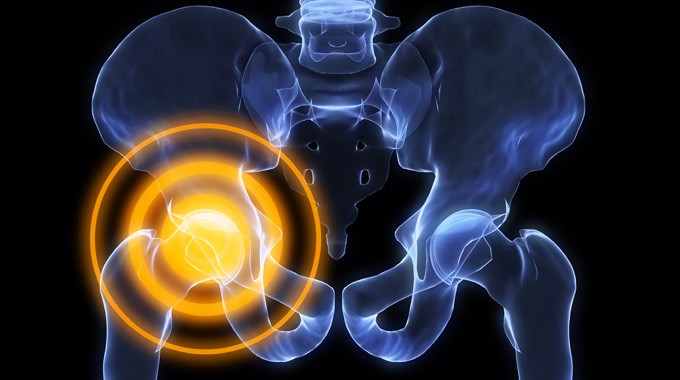The following story is sponsored by Savannah’s Spine & Sport Physical Therapy.
A fairly recent study, done by researchers at Washington University in the St. Louis School of Medicine, has revealed a shocking and disturbing painkiller epidemic among current and former NFL players.
Of the 644 players polled, 52% confirmed having used prescription pain medication while playing. Of that group, 71% said they misused the pills, of which 15% admitted to further misuse within the past month. 63% of users also said that they received pills via illegal means, i.e. non-medical sources.
Pain medication is not a solution, rather a masking agent that leads to further problems down the road.
“A pain pill targets the symptom of the problem. Pain, itself, is not the problem; pain is a symptom of something bigger. The reason creates the pain, the pain does not create the reason. Especially musculoskeletal pain,” said Dr. Jacques Beauchamp of Spine & Sport. “Pain is just a way of getting your brain’s attention to say, ‘hey, something is wrong here’. If all you do is just mute that signal, you’re not really fixing the problem. That’s why I enjoy what I do as a physical therapist, because I try to get to the root of the problem, help the body heal itself, and then the pain goes away.”
So, for athletes currently competing, are there long term benefits to physical therapy, as an alternative to pain medication?
“There’s a reason professional athletes, nowadays, look a heck of a lot different than they did 30, 40, 50 years ago. They’re in better shape. They’re lean,” Dr. Beauchamp began. “You see guys like Calvin Johnson, with 0% body fat and muscles all over the place. That’s because if you get your body trained as best as you possibly can, you’re better able to do what your body needs to do. Rather than just going out, being out of shape, taking a pain pill to get through the game, and somewhere down the road having to take more pills because one doesn’t do as much as it used to. That’s when people really start having problems, when they don’t address the pain and take care of the actual root of the problem. That’s what leads to addiction.”
I also spoke to former Georgia and NFL offensive lineman Matt Storm about the issue.
“When it comes down to it, I never really used painkillers for anything, mainly because I never had any specific injuries or anything like that in high school or college,” said Storm. “The first time I was ever around them or had access to them was when I did get into the NFL. It was something to get you back out there in a quicker manner and take the pain away. It was pretty readily available, and easy to get prescribed. It was never pushed on me back when I was playing, but mind you that was in the late 90s, so you’re looking at 15, 20 years ago.”
With growing concern as the problem trickles into the amateur levels of the sport, Storm stated, “Now, kids in high school are getting hooked on them because they’re taking them, first, from their parents, getting further injured, and then getting prescribed. Being around them myself, and in the Arena Football League, as well, I’ve seen how addictive they really are. It’s an epidemic these days. It’s not just in the NFL, and I’ve seen it ruin a lot of players lives. I know guys who were taking upwards of 20 or 30 pills a day. Physical effects aside, that’s a lot of money.”
Unfortunately, Storm was not exaggerating.
Dan Johnson, a former tight end for the Dolphins was taking almost 1,000 painkillers a month, even after his playing days were over.
“I was taking about a thousand Vicodin’s a month,” Johnson told Outside the Lines. “You know, people go ‘That’s impossible. You’re crazy.’ No, that was exactly what I was taking.”
Storm had no experience with what Troupe said about trainers using one player to get pills for others, but said, “In arena football, our team doctor would just let us go into his office and grab a handful of whatever we wanted to. We had access to as much as we wanted. We didn’t even have to get prescribed for it.”
The Washington University study also found a striking correlation between post-football painkiller abuse and heavy drinking. Of the players in the study that had admitted to misusing pain pills within the past month, 27% also said they had consumed 20+ drinks over that same period.
In regards to former players that continue to use them when they’re done playing, Storm said, “People aren’t taking them now because they want to take the pain away. They’re taking them because they want to get high or escalate their drunkenness. They become such full blown addicts, they have to take them just to get back to a sense of normalcy. Then once they get there, they start overdoing it because they have to take more, and more, and more. You build up such a tolerance, you have to do more, and more, and more to get that original high again. This stuff screws you up, not just physically, but I’ve seen what it does to guys monetarily, and in their family lives.”
Can physical therapy offer relief to retired athletes that abuse pain medication?
“In some cases, absolutely,” said Dr. Beauchamp, “but let’s just be honest, in some cases no. Sometimes, that part of the body is just too degenerated from the abuse it took. However, in other cases, people can be rehabbed out of it.”
That’s why it is so important to utilize physical therapy, at all levels of sport, as opposed to painkillers.
“In physical therapy, you have an opportunity to fix the problem. With a pain pill, all you’re doing is masking the symptom,” Dr. Beauchamp concluded.
If you address the problem while you’re still actively playing, with physical therapy as opposed to painkillers, you can continue to use physical therapy as a means of relief. However, if you use or abuse pills to cover up the pain, you won’t necessarily be able to rehab the root of the problem, even using physical therapy, down the road. Physical therapy offers chemical free pain relief; a tried and true method that works, no matter how old you are, or what level you’re at. Pills are simply a mask, and if you continue to misuse them, and fail to address the problem, head on, you might be too far gone by the time you realize your mistake.





